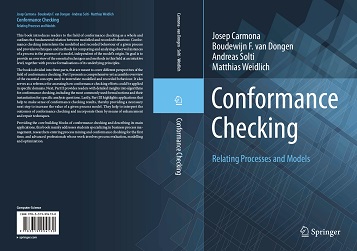My name is prof.dr.ir. Boudewijn van Dongen and I am full Professor in Data Science at Eindhoven University of Technology.
Contact me at:
P.O. box 513, 5600 MB, Eindhoven, The Netherlands
Room: Metaforum 7.064
About my research group
I am full professor in Process Analytics and chair of the Process Analytics group at Eindhoven University of Technology, a small research group within the data science domain of the department.
Outside TU/e, I serve as chair for the IEEE Task Force on Process Mining. This Task Force is established in the context of the Computational Intelligence Society (CIS) of the Institute of Electrical and Electronic Engineers, Inc. (IEEE). The goal of this Task Force is to promote the research, development, education and understanding of process mining. The task force is a very active community of researchers and practitioners, organizing scientific events, educational programs and challenges and contests in the area of process mining. It is one of the most active task forces within the CIS.
The process analytics group focusses on the interplay between processes, the data these processes generate, the models that are used to describe them, and the systems that support these processes The research group distinguishes itself in the Information Systems discipline by its fundamental focus on modelling,understanding, analyzing, and improving processes.
The research in the our group continues to expand outward from a classical situation of data with clear case notions in the context of explicitly structured processes to a broad, multi-faceted field, where processes are less structured or consist of many interacting artifacts and where case notions in data become more fluid or are complex, multi-dimensional networks.
My personal interest is in conformance checking. Conformance checking is considered to be anything where observed behavior needs to be related to already modeled behavior. Conformance checking is embedded in the larger contexts of Business Process Management and Process Mining. I aim to develop techniques and tools to analyze databases and logs of large-scale information systems for the purpose of detecting, isolating, diagnosing and predicting misconformance in the business processes supported by these systems.
The notion of alignments play a seminal role in conformance checking and the AIS group is world-leading in the definition of alignments for various types of observed behavior and for various modelling languages.
Next to the theoretical foundations, my group also maintains two large open-source platforms, ProM for process mining research and CPN Tools / CPN IDE for modelling colored Petri nets.

